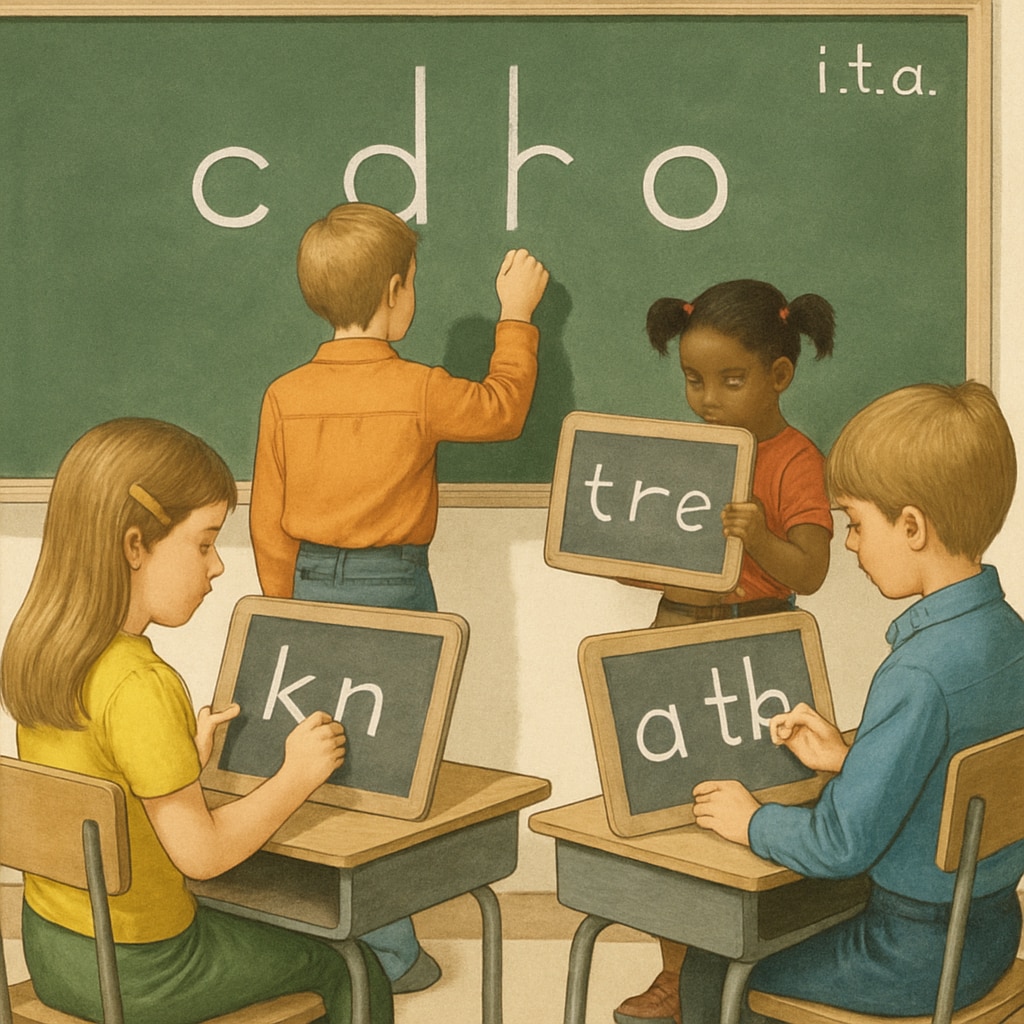The Initial Teaching Alphabet (ITA) was an ambitious educational experiment widely implemented in the 1970s. Designed to simplify English for early readers, ITA aimed to bridge the gap between phonetics and traditional spelling. However, while it promised better literacy outcomes, its long-term impact on spelling skills has been controversial. This article explores how ITA affected spelling abilities, the challenges students faced transitioning to standard English, and the broader implications of this innovative but flawed teaching method.
The Origins and Goals of the Initial Teaching Alphabet
ITA was developed by Sir James Pitman in the 1960s, with the goal of improving literacy acquisition among young learners. Unlike traditional English orthography, which is often inconsistent in representing sounds, ITA used a phonetic-based system of 44 characters to match spoken sounds. Proponents believed this approach would eliminate the confusion caused by irregular spellings, leading to faster reading and writing development.
By the 1970s, ITA was adopted in schools across the United States, United Kingdom, and other English-speaking countries. Teachers were optimistic, and early studies reported improved reading fluency among ITA users. However, as students transitioned from ITA to traditional orthography, unforeseen challenges emerged.

Long-Term Consequences on Spelling Skills
While ITA made early reading easier, its impact on long-term spelling skills was less favorable. Many students who learned to read and write using ITA struggled to adjust to standard English spelling. The phonetic nature of ITA conditioned learners to spell words as they sounded, leading to persistent errors when transitioning to conventional orthography. For example, a student might spell “night” as “nite” or “phone” as “fone,” mirroring ITA’s simplified approach.
Several studies conducted in the late 1970s and early 1980s highlighted these issues. According to research published in the Encyclopedia Britannica, students taught with ITA often lagged behind their peers in spelling accuracy by middle school. Teachers and parents expressed frustration, pointing out that the time saved during early literacy development was offset by the prolonged adjustment period in later years.

Critiques of the Initial Teaching Alphabet
Critics of ITA argue that it underestimated the complexity of language acquisition. English spelling, while inconsistent, also encodes important etymological and morphological information that helps learners understand word meanings and origins. By stripping away these nuances, ITA inadvertently hindered students’ deeper engagement with the language.
Furthermore, the dual-system approach—starting with ITA and transitioning to traditional orthography—added cognitive load. As a result, some students experienced confusion and frustration, particularly those with learning disabilities such as dyslexia. While ITA was intended to simplify reading, it often complicated the broader literacy journey.
Lessons Learned from the ITA Experiment
The rise and fall of ITA provide valuable lessons for educators and policymakers. First, any educational innovation must consider its long-term effects, not just short-term gains. While ITA was well-intentioned and backed by scientific reasoning, its implementation revealed the unintended consequences of disrupting established learning pathways.
Second, the ITA experiment underscores the importance of balancing phonetic simplicity with linguistic richness. Modern teaching methods, such as structured phonics, aim to achieve this balance by combining phonetic instruction with exposure to standard spelling patterns.
Finally, ITA highlights the need for rigorous testing before widespread adoption. By studying pilot programs and gathering extensive data, educators can avoid repeating the mistakes of the past.
Conclusion: The Initial Teaching Alphabet was a bold attempt to revolutionize literacy education. While it succeeded in making early reading more accessible, its long-term impact on spelling skills revealed its limitations. Today, ITA serves as a cautionary tale, reminding us that educational reforms must consider the full spectrum of learning—both immediate and enduring.


